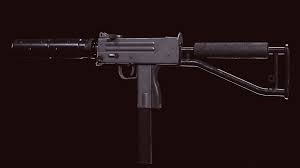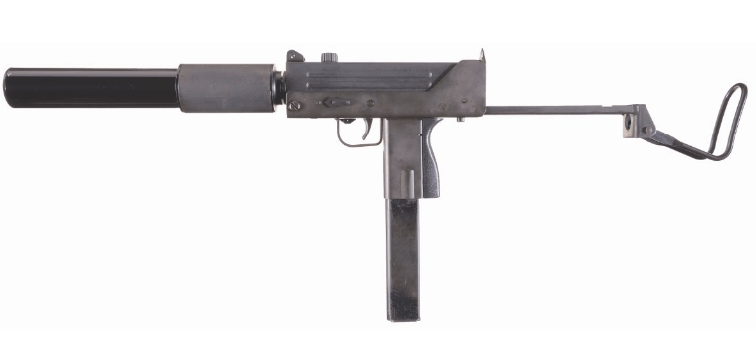Friday is for fun, and what more fun could we have than discussing one of the most fun firearms in modern pop-culture. So when it comes to firearms with an attitude problem, few can hold a candle to the MAC-10. It’s loud, boxy, unapologetically ugly, and about as subtle as a trenchcoat full of bears. You’ve seen it in movies, in rap videos, and in the sweaty palms of both DEA agents and cartel kingpins. It’s the gun that screams “spray and pray” in the most glorious, violent, and spatteringly cinematic way possible.
But behind the pop culture glory lies a firearm that, to be honest, was more notorious than effective. Still, the MAC-10 carved itself a place in gun lore, not because of its battlefield prowess, but because it was a bona-fide rockstar.
Origins of a Lead Slinger
The MAC-10 was the brainchild of Gordon B. Ingram, a firearms designer with an eye for simplicity and violence. In the early 1960s, Ingram envisioned a compact, high-rate-of-fire submachine gun that could be produced cheaply, used in close quarters, and still punch like Ali.
After developing a few early prototypes, Ingram partnered with Mitchell WerBell III, a former OSS officer and suppressor guru who founded SIONICS (Studies In the Operational Negation of Insurgents and Counter-Subversion), and yes, that’s a real name. If you aren’t aware of WerBell, I highly suggest you just go check out some of the stuff he’d done in his life, plus the guy had a great stache. WerBell’s mission was to make suppression mainstream, and when he paired his suppressor tech with Ingram’s weapon, the MAC-10 became a wet work darling.
Together, they pitched it to the U.S. military and intelligence community as a covert operations weapon: small, suppressed, and terrifying when fired full-auto from the hip.
Enter: Military Armament Corporation, who took over mass production and tried to push the MAC-10 to U.S. forces, police, and allied countries.
(Spoiler alert: it didn’t exactly fly off the shelves.)
Specs That Sound Better Than They Shoot
Let’s run it down:
- Caliber: .45 ACP or 9mm
- Rate of Fire: 1,090 rounds per minute in 9mm
- Barrel Length: 5.75 inches
- Weight (loaded): 6.2 lbs
- Magazines: 30-round stick mags (sometimes, okay always, janky)
- Suppressed? Yes, with the WerBell-designed SIONICS suppressor
On paper? It’s a beast. It was compact, fired a fat round, and could dump an entire mag in under two seconds.
In reality, it was loud, muzzle-heavy, difficult to control, and about as accurate as a slingshot in a hurricane. There was no “engaging targets”, it was more like you were “spitting flames and praying something got knicked.”
Still, it worked if you were within 10 feet of your target and didn’t mind reloading constantly.
Operators Tried. Briefly.
Despite its flaws, the MAC-10 did see limited use with CIA paramilitary groups, Navy SEALs, and some Special Forces units during the Vietnam and Cold War years. It was a niche weapon for niche operations: think wet work, prisoner snatch ops, or urban assault where suppression and concealment mattered more than long-range accuracy.
Some SEALs appreciated the compact size and sheer volume of fire, ideal for room-clearing and ambushes. However, the reliability, heat buildup, and notorious “mac-burst spray pattern” meant most elite operators ditched it quickly for the HK MP5, Grease Gun, or a suppressed M1911.
The final verdict from the boys with boots on the ground? “Thanks, but no thanks.”

Cinema Royalty: The MAC-10’s True Battlefield
The MAC-10 didn’t end up conquering the jungles or deserts…but it did conquer Hollywood.
- Scarface (1983): Tony Montana empties a mag like he’s gunning for Best Supporting Actor.
- Miami Vice: Crockett and Tubbs brought the heat, MAC in tow.
- Escape from New York: Snake Plissken made the MAC look like it came standard with a leather eyepatch.
- RoboCop: Detroit’s scumbags made the MAC-10 look like standard issue.
Video games weren’t far behind. From Call of Duty to GTA, the MAC-10 always shows up when it’s time to embrace chaos and let the bullets fall where they may. In rap culture, it became a lyrical flex, equal parts fear and fashion accessory.
Let’s be honest: If the Oscars gave out awards for Best Supporting Submachine Gun, the MAC-10 and MP5 would be elbowing each other for a shelf full of gold.

The Civilian Scene: Clones, Kits, and Curiosity
Once the O.G. Military Armament Corporation folded (after a very rocky commercial journey), the MAC-10 lived on in clone form, often as semi-auto pistols made by Cobray, MasterPiece Arms, and other boutique or garage-tier shops.
These civilian MACs are:
- Semi-auto only (ATF per usual says “no fun allowed”).
- Sometimes suppressed, often heavily modified.
- Rarely reliable.
- Always conversation starters, seriously.
There’s a whole niche market around building MAC-style pistols with stabilizing braces, optics mounts, or just for the cool factor. It’s really never about function, it’s all about the vibe. It’s sort of like driving a DeLorean or wearing a Members Only jacket at the range.
Final Verdict: Infamous, Not Effective
The MAC-10 is an icon, but it’s not a legend of performance. It wasn’t accurate, wasn’t durable under sustained fire, and wasn’t exactly loved by its operators.
That didn’t stop it from becoming one of the most recognizable firearms on Earth. Why? Because it looks cool, sounds scary, and turns every scene it’s in into a showdown.
The MAC-10 was made to win wars, but ultimately it felt short, BUT, it was still made to look like it could. And in Hollywood, and sometimes, in the dark corners of real conflict, that was enough.
Read the full article here


